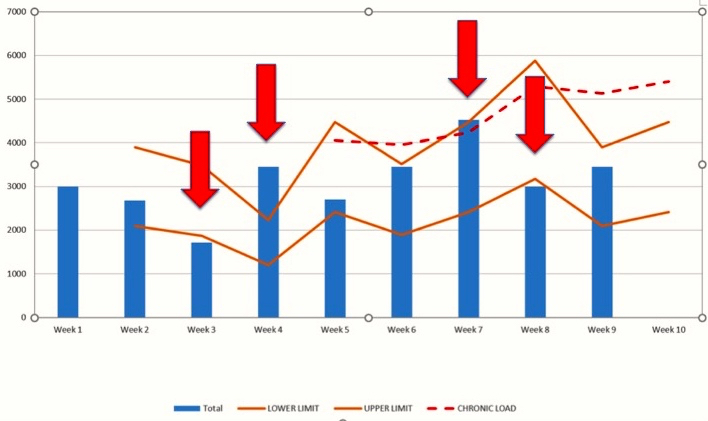Why Do I Keep Getting Injured?
Words by Sports Physio Myles Burfield, B.Physio; B.Ex.Sc
Ok! Let me preface this article by confirming that nobody is invincible, and everyone has a breaking point when engaging in active and sporting pursuits. But what is your breaking point? And how do you find it safely, without breaking too many times? The answers to these questions are integral to achieving your training & competition goals and preventing injury.

Over the past few years the Australian Institute of Sport (AIS) has been compiling data on injury and relating it to load (load= the amount of training or activity you complete). Amazingly what they found, in over 1000 athletes, across 7 different sports, is that if you change your load too much from week-to-week then you get injured (in a nutshell). What is even more amazing is that what they found was almost exactly equivalent to the research done by Cricket Australia, Rugby League, and Australian Rules Football (Blanch & Gabbett, BJSM, 2015).
So what this effectively means is that it doesn’t matter if you are a sprinter, distance runner, swimmer, footy player, gymnast (I could go on, but you get the drift), if you don’t manage your ‘load’ correctly, then you WILL break down.
Sound like Common sense? Well yes, but surprisingly most of the injuries Physio’s see are overuse injuries (and even some acute injuries) and are from people breaking the basic loading rules.
Defining Load from Sport to Sport
“Load” is a word we use to describe the total stress on the body over a period of training. It can be calculated in a number of different ways i.e. measuring distance you swam/ran/paddled/cycled/sprinted etc, measuring your heart rate, perceived effort, or time spent training etc. Or Even a combination of the above.
For their research the AIS calculated load as ‘training time’ multiplied by ‘rate of perceived exertion (RPE)’, which is how hard you felt the session was over all {ie time x RPE}, but you can trial different values and see which works for you. For more help with this, chat to your Physio.
So what are the “rules” you ask eagerly?
Well the simple interpretation of the data dictates that:
Rule 1: Do not change your training load UP by more than 30% week to week, or reduce by more than 20% week to week. Once you change your load by >30% you are 6 times more likely to injure yourself, if you jump up to a 50% increase it’s 8 times more likely. DANGER!
Rule 2: Chronic vs. acute training load. Chronic training load is the average of your last 4 weeks of training. Acute training load is what you did this week. If your acute load is >150% of your chronic load then you more than double your chance of injury. DANGER!
Rule 3: The injury often presents 2-3 weeks after the training load error for soft tissues and 4-6 weeks for bone. So often you need to think back to what you have done over the past month to find out where you went wrong.
Here is an example of one of our athletes who didn’t realise they were breaking these training rules. Over 9 weeks of training these rules have been broken 4 times (red arrows). Now in reality you can’t always stick perfectly to these rules. Thankfully breaking them once doesn’t guarantee injury, but it does increase your likelihood. Instead you can use these rules as an early warning. If you have done to much training (or to little) then you might want to consider increasing your maintenance work (stretching, massage, physio) and being careful with high risk training sessions the following 2 weeks, or return from a week of holiday/sickness more graded
. If you have no idea where to start then talk to your coach, or book a consult (ph 5500 6470) with one of our Exercise Physiologists, to get a good starting point and plan a build from there.

